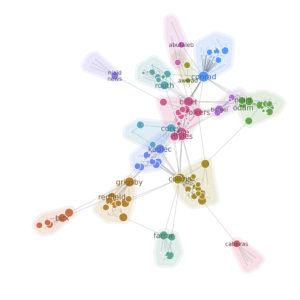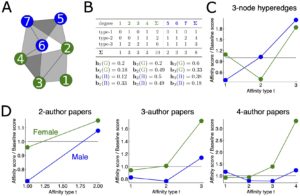In celebration of the 25th anniversary of Watts and Strogatz’s seminal paper on small world networks, Nature Reviews Physics recently published a collection of six Research Spotlight articles on advances in network analysis (see 25 years of small-world network theory).
One of those six spotlights is a summary of my paper recently published in Science Advances (joint with Jon Kleinberg and Austin Benson) on higher-order measures of homophily. You can read the spotlight here: Measuring Similarities Within Groups. The original paper is here: Combinatorial characterizations and impossibilities for higher-order homophily
Our research findings on hypergraph homophily were also previously covered in an article on Phys.org, and an article in the Communications of the ACM.



